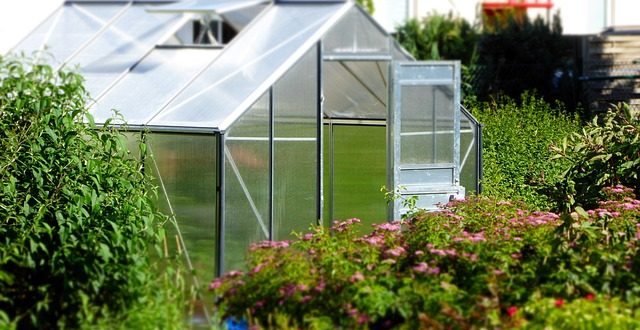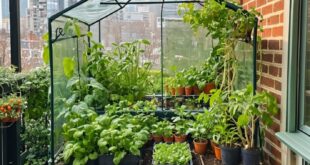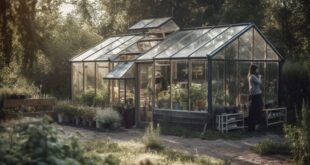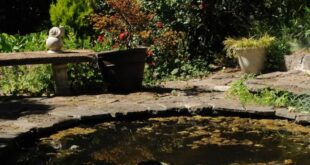A greenhouse is a great investment for anyone striving for a self sufficient garden in a cool climate. By making the most of those precious sun rays as they enter and warm the air inside, you can take your gardening skills to the next level. It shouldn’t be too daunting a task – the hardest part is just choosing what type of greenhouse will suit your needs.
Size and Budget
Consider how much space you will have for your greenhouse, in other words, how much garden you are willing to give up. They tend to range from 4 x 6ft to 12 x 24ft; if you have limited space it is better to select a wide greenhouse as opposed to long and narrow one to provide you with a more practical area for planting.
If you have very little space available you could consider a portable greenhouse, it can easily be set on a patio or decking area and then moved or taken down when necessary. Even if you have no outdoor space at all there is still the option of an indoor tabletop greenhouse available to you. It can be placed on any surface you have available, it consists of several shelves for growing space and you can add a heat lamp for greater efficiency.
Calculate the budget you have for your greenhouse, remember, a greenhouse may be expensive at first but it will pay for itself over the years. The larger the greenhouse the less it will cost per square foot of growing space, so we recommend buying as large as you can afford, you’ll have no problem filling it.
Advantages to having a greenhouse
- Look forward to bigger plants, more flowers and larger harvests.
- Delicate plants that would normally die outside will thrive in a greenhouse.
- You can start growing vegetables early to get maximum produce.
- Extend your standard growing season by as much as 3 to 4 months to prolong your hobby throughout the year.
- Starting and cultivating flowers to extend their growing life.
- Move plants like tomatoes and peppers into the greenhouse for the final ripening.
- Growing and harvesting vegetables for your own use during the winter months.
- Reduce the overall cost of gardening by growing plants from seeds.
- Experiment with new varieties and hybrids of plants.
- Produce plants for retail purposes.
- Protecting vulnerable plants at night in cold weather.
- The chance to grow more sensitive plants such as peppers, aubergines and cucumbers.
- You can still garden in the dry even when it’s raining.
Greenhouse options
If you’ve got more time on your hands and want a challenge then you can build your own greenhouse from scratch or, you could purchase a green house kit which would be much easier and possibly cheaper as well.
The staging needs to be strong enough to take the full weight of plants, high level shelves are useful for storing tools and the various bits and pieces.
Design options
Lean to; Built to lean against another structure, is a great option if you’ve got limited space and a suitable wall available. The disadvantages being the amount of light that can enter is halved and you’ll have slightly less growing space. The advantage being the building it is leaning against acts as a heat sink and as a result avoids large temperature fluctuations between day and night.
Apex; This type is usual freestanding type with an apex roof which allows light in from both sides and therefore permits more growing space.
Material options
Plastic; Cheaper, easier to fit, will not break as easily, especially under temperature fluctuations and is easier to seal.
Glass; Will allow more light in which is an obvious advantage for your crops, but is easily broken. You have the option of horticultural and toughened glass; toughened glass is a little more expensive but shatters safely and is much less likely to break in the first place.
Structural options
Aluminium; Lightweight, corrosion free and doesn’t require maintenance, a cheaper alternative to wood, heats up and cools down quickly. For a higher price, architecturally more attractive models available in a choice of colours are offered.
Wood is arguably more aesthetically pleasing, they require treating every few years to protect from rot.
Brick and wood or brick and aluminium are more expensive but give a more permanent appearance.
Optional accessories
Guttering; to collect rain water in a water butt, this will be very beneficial to your crop as opposed to treated drinking water and not to mention doing your bit for the environment.
Staging; waist high slatted surfaces can be used for planting seeds and propagating seed trays.
Ventilation; windows in the roof and walls. Automatic roof vents are a must, if you spend time at work during the spring and summer months as the temperature can get too much. A timed drip irrigation system is valuable when you are away.
Soil in greenhouses has a lot of work to do, so using grow bags or containers is wise.
Installation
Nearly all greenhouse kits are designed to be put up yourself, if this seems too daunting you can usually opt for an installation service from your greenhouse provider at a cost.
It’s worth making provision for power and water before the base is prepared.
 Gardeners Club The Gardeners Club is a free to join online club for everyone with an interest in gardening and gardens.
Gardeners Club The Gardeners Club is a free to join online club for everyone with an interest in gardening and gardens.





